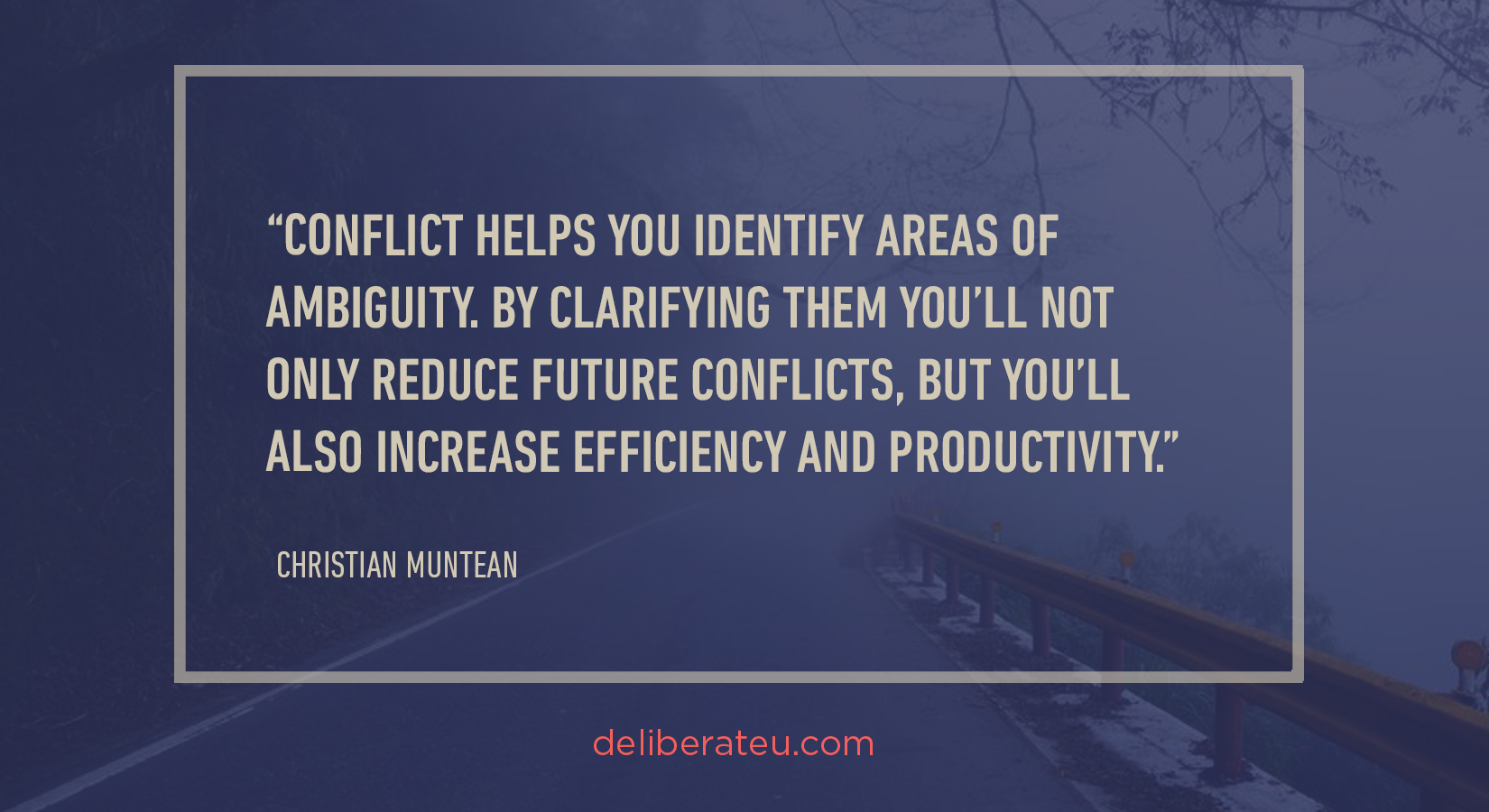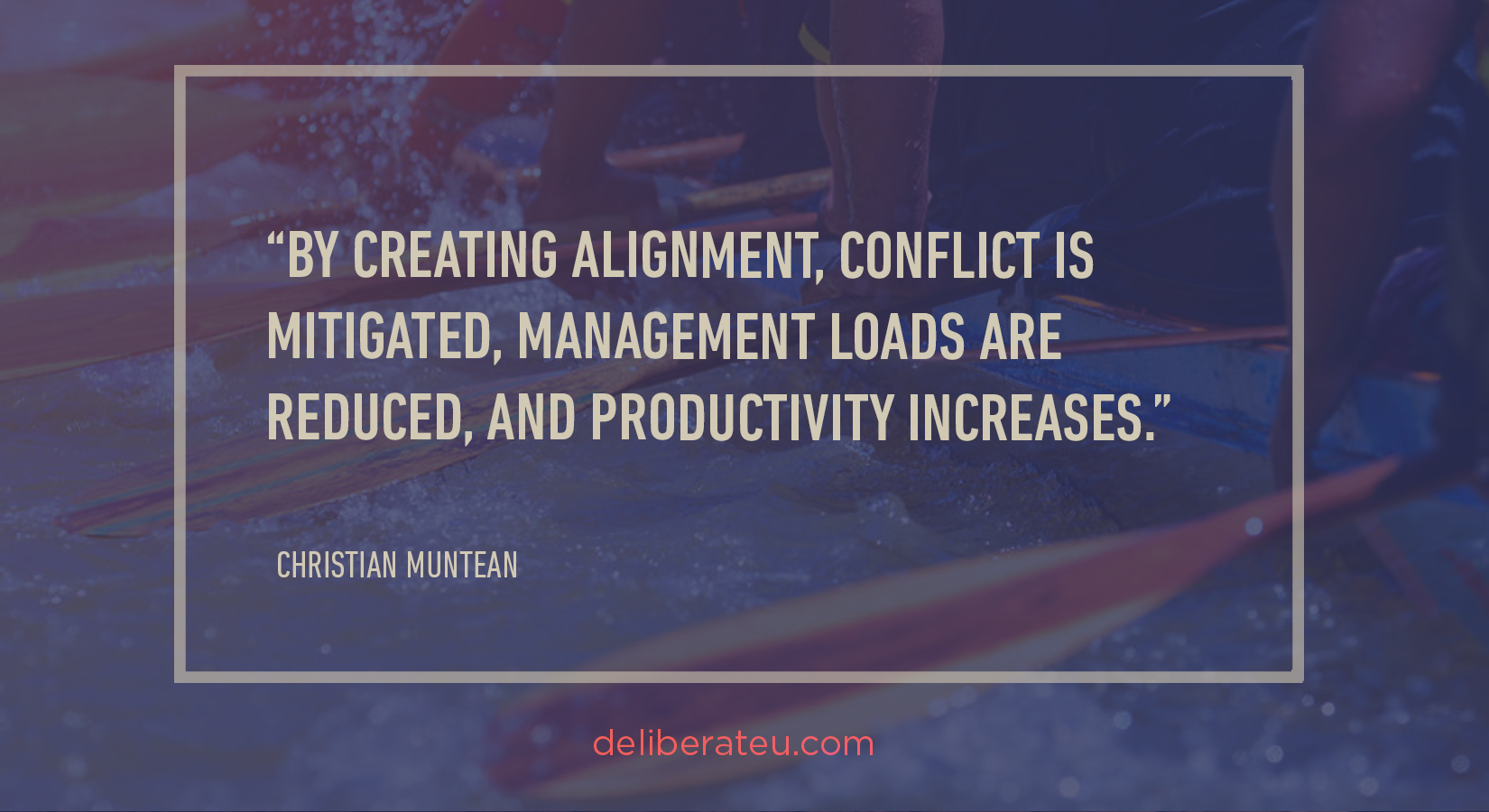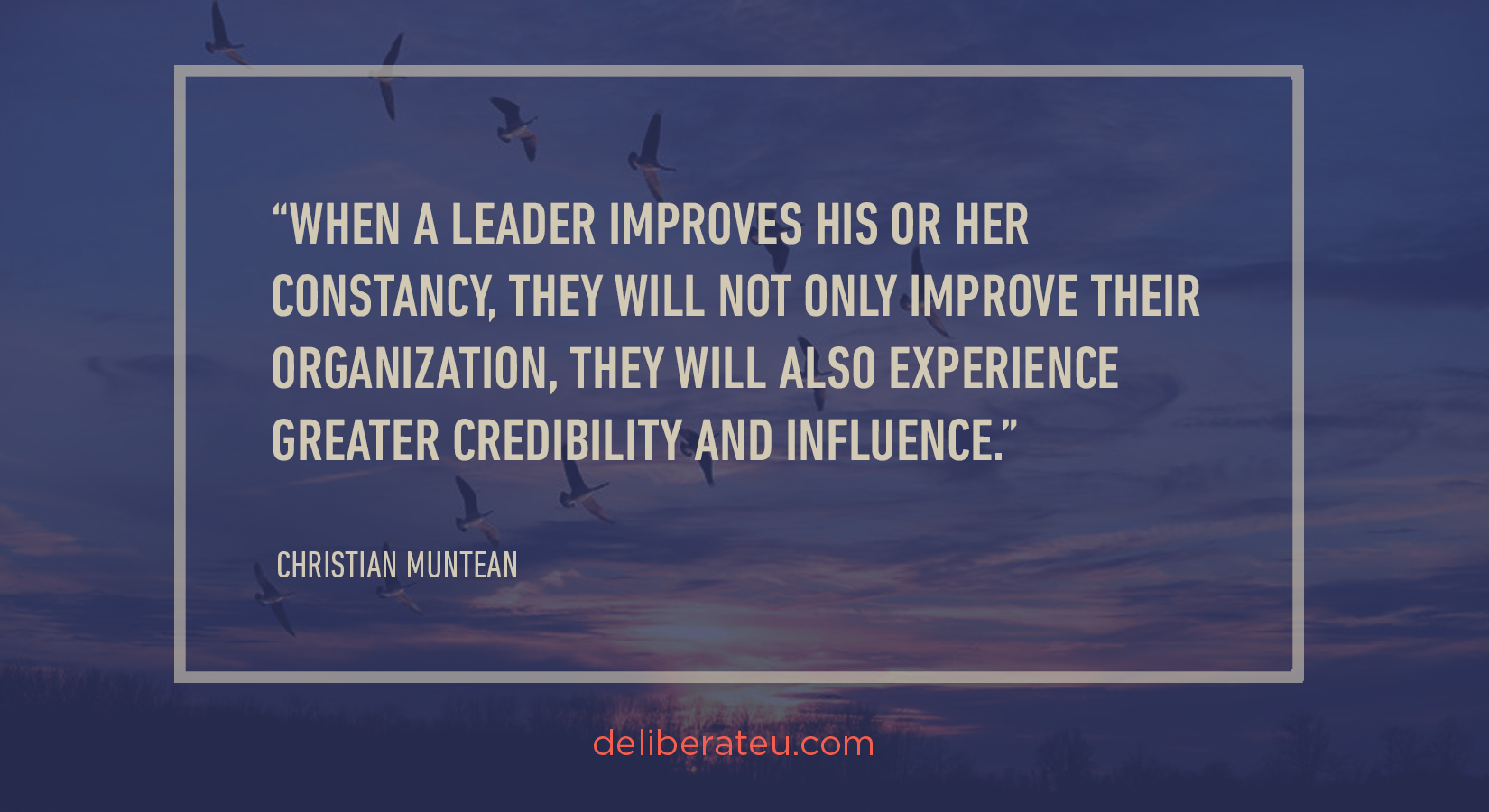The following blog is the 6th in a series on “Leadership of People and Culture”. This contribution comes from a blog posting by Christian Muntean.
Conflict is a common part of organizational life. We know this. But despite this fact, most leaders feel under-equipped and unprepared when it occurs. This approach doesn’t best serve those we lead. Or ourselves.

Often leaders get distracted by problem individuals or situations. In fact, nearly all resources on conflict resolution focus on this level.
The truth is, if our teams experience chronic or frequent conflicts, lasting change isn’t built from interpersonal interventions. It is built through leadership interventions. When people feel respected, appreciated, and they put in the effort to communicate well—they work well together.
For most companies, changing the way they relate to conflict is the single fastest way to achieve growth and increase profitability or impact.

Here are four principles that will dramatically reduce conflict and increase efficiency.
- The principle of courageous leadership
Problems tend to grow if not resolved and when left on their own. It often takes courage to acknowledge our own reactions to a conflict as well as face the reactions of others.
If a problem exists in your organization and repeats itself, it needs courageous leadership attention. If there is an element of “here we go again,” then regardless of where the problem expresses itself the leader needs to ensure a solution.
Courage is important otherwise leaders tend to wait until they have to react. In those instances, they utilize anger (or fear) as their energy to create the much-needed change. This is damaging. It is crucial for leaders to make courageous choices instead of anger or fear-based choices. Avoidance of an issue—is actually a choice.

Leaders are the only people in the position to create and sustain organizational and cultural change.
That change may take place in one or more of these four areas:
- Personal: Are there behaviors or attitudes that the leader could start, change, or stop doing that would improve the situation?
- Relational: Is there any place where trust or respect has broken down (or hasn’t been sufficiently built) that the leader can help improve?
- Systemic: How are systems “running people into each other?” Most issues in the workplace can be mitigated or resolved by improving processes such as clarifying and simplifying how:
- Decisions are made.
- Action is taken.
- Information flows.
- Roles are understood.
- Responsibilities are defined, shared, or handed off.
- Cultural: Over time, organizational culture will reflect the values, attitudes, and behaviors of leadership. The sphere of influence of the leaders you work with reflects themselves in some way. If there are problematic but commonly held values, attitudes, or behaviors in the organization, what needs to change and what changes can you help the leader make that will produce that change?
Conflict provides you with an opportunity to help your organization grow. When leaders engage well with conflict, it expands their impact.
- The principle of clarity
Ambiguity breeds conflict. Bringing clarity to a situation is one of the most powerful ways that you can remove or reduce conflict.
Think of a road. With good lighting and signage, there are far fewer accidents. Take away the clarity (lights and signs), and you’ll have problems.
Here is a shortlist of where clarity is needed. It is by no means exhaustive:
- Purpose and outcomes
- Performance expectations
- Behavior expectations
- Roles and responsibilities
- Deadlines
- Decision making / Approval frameworks
- Access to resources

- The principle of alignment
Alignment reduces conflict. Conflict is often an indication that your organization is out of alignment.
By clarifying your organization’s “why” or purpose, and then organizing all goals, plans, metrics, and behavioral expectations underneath that “why,” things tend to run smoother. Conflicts tend to recede.
As leaders, one of our chief responsibilities is the maintenance of this alignment. It is the leader’s role to monitor and protect it. To ensure that unaligned goals or activities are either removed, brought back into alignment, or forced to justify themselves.
Only the leaders can step back and get the big picture view. No one but the leader has the authority or resources to make alignment happen. Conflict helps you identify where the organization is “out of alignment.” By creating alignment, conflict is mitigated, management loads are reduced, and productivity increases.

- The principle of constancy
It can be exciting when a leader steps forward, creates clarity, and maps out alignment. But we discourage our people when we drop the ball by not being constant or by not reinforcing the clarity we’ve created. It’s a quick way to lose credibility.
Turning a team or organization around can be an energizing process, even when there are challenges. But to be effective, leaders must be constant. They must reinforce constancy.
Conflict helps you identify behaviors and practices that can be improved. When a leader improves his or her constancy, they will not only improve their organization, they will also experience greater credibility and influence. Conflict helps you become a better leader.

Conflict is a growth tool
The path to reducing conflict in our workplace is the same path to building a high-impact workplace.
The savvy leader will use existing conflict to identify areas of potential growth and breakthrough for his or her organization.

